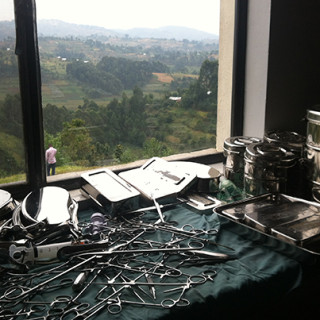Hub in Ethiopia moves HIV research forward
HIV is one of the largest public health threats in many low-income countries. Could research on location lead to new knowledge and improved treatment methods – to benefit both poor and rich areas of the world? Lund University is investing in its presence in Ethiopia.
Since the start of the millenium, access to effective HIV treatment has increased in many of the world’s poor countries, in particular in sub-Saharan Africa where two thirds of the world’s HIV-positive people live. But how does treatment work in low-income countries? Knowledge of HIV and how it is treated is still largely based on experiences from welfare states.
“Here in Sweden, HIV care is based on hospital clinics with access to specialist physicians and advanced laboratory resources. In Ethiopia, the reality is very different. HIV care must be implementable in simple forms, in primary healthcare and by nurses”, explains Per Björkman, reader in Infection Medicine at Lund University.
In Ethiopia, tuberculosis infection (TB) is also common. Among people who are HIV-positive, TB is the most common cause of death even if antiviral drugs are available. This depends mainly on the fact that TB is harder to detect in HIV-positive patients.
” HIV care must be implementable in simple forms.”
Per Björkman has travelled between Malmö/Lund and the Adama province in Ethiopia since 2010. Over that time, he has been joined by his research colleagues Patrik Medstrand, Erik Sturegård and Niclas Winqvist. They are experts in virology, microbiology, and epidemiology (contagion) respectively.
Together with Ethiopian helthcare workers and researchers, they have created a research station on location to collect and process data from local healthcare centres in Adama. A number of students and doctoral students at Lund University have already made the most of the opportunity to research HIV and tuberculosis in a country where both infections are a daily concern.
In his doctoral thesis, Taye T Balcha developed and evaluated methods to improve tuberculosis diagnostics among the HIV-positive in Ethiopia and other low-income countries. Among his findings, he discovered that a new test method based on PCR technology (Polymerase Chain Reaction, a molecular biology-based method of analysis) leads to the detection of 50 per cent more cases of TB among the HIV-positive than current methods. His studies have led to the method now being generally recommended in Ethiopian healthcare.
Sten Skogmar has also recently completed a PhD on studies conducted in the Adama region. He developed a new method for identifying HIV-positive individuals at high risk of contracting TB. This tool facilitates the assessment of patients who need to undergo further and more resource-intensive testing for TB.
According to Per Björkman, clinical research findings from studies such as these can rapidly be converted into practice in Ethiopia. Even from a Swedish and European point of view, presence in Ethiopia is of great value, he believes:
“If we are to be able to conduct broad and outstanding research into HIV, it is necessary to be on location and to collaborate with countries where the disease is more prevalent than in Sweden.”
And the work continues. A current research project is mapping and investigating the development of resistance to HIV treatment. This is an urgent area of investigation as resistance to drugs can undermine the results of treatment programmes in the African countries. A larger study will soon be launched into how tuberculosis affects pregnancy.
Text: Björn Martinsson
Facts
-
The Adama province
-
The Adama province is located around 100 kilometres southwest of the capital Addis Abeba and has approximately 600 000 inhabitants. The province lies along a major transportation route in Ethiopia, and the prevalence of HIV is higher there than in other parts of the country, with around six per cent of the adult population estimated to carry the infection.






